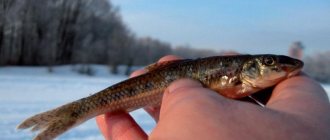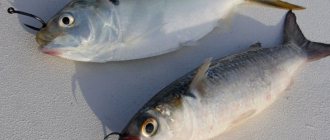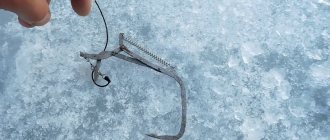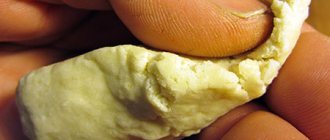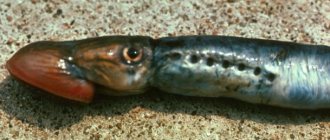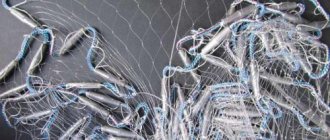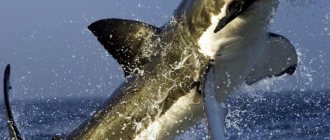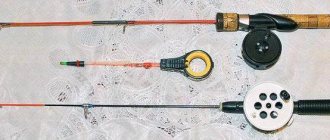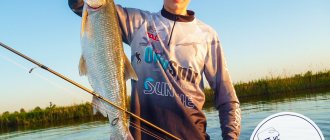What is used as live bait
Small species of fish are used as live bait, such as:
- Gudgeon.
- Bleak.
- Loach.
- Verkhovka.
- Ruff.
Or small fish of roach, crucian carp, dace or perch. Live bait is caught using float rods on a small hook and thin line. Worms, flies and maggots are used as bait.
In addition, small river toads or crustaceans can be used as live bait. They are very effective for catching fish such as catfish and asp.
What gear is used for live bait fishing?
Before you learn how to put live bait on a girder in winter, you need to clearly understand what gear will be used during fishing.
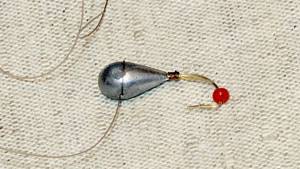
The equipment is selected based on weather conditions and the season, the general condition of the reservoir and the feeding habits of predators; for the correct fishing process, the following equipment is selected:
- float rod with hook size from 1 to 4;
- bottom gear with different hook configurations;
- Shukolovkas or zherlitsy, modern mugs.
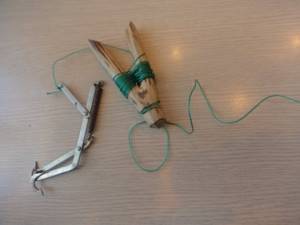
The method of placing live bait on a hook is selected based on the size of the live fish and its activity, which affects the efficiency of fishing.
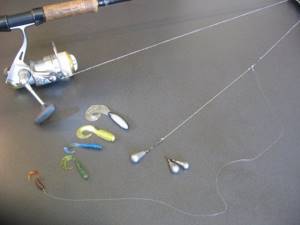
A small fish should not play with the float or open the trap, which can significantly confuse the fisherman himself and force him to constantly check the tackle and speed up the death of the baitfish.

How to hook live bait on one hook
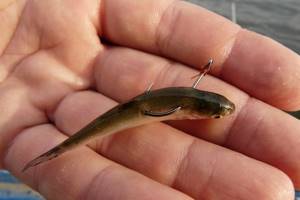
The basic requirements for a live bait hook are as follows:
- The hook must be very sharp and made of high-quality material.
- The number of stings on a hook can be from one to three. They are chosen depending on the method of attaching live bait.
- Hooks must have a long shank.
- Hooks should be as thin as possible. This way they will injure the live bait less.
- To attach small live bait, twin (not double) hooks should be used.
- Hook sizes depend on the length and weight of the baitfish. Usually hooks with numbers from six to twelve are used.
- To catch large fish, hard forged hooks should be used.
- It is better to use hooks from branded manufacturers who guarantee the quality of their products.
The advantages of a single hook include the following:
- This type of hook is easier to handle than a double hook.
- Live bait has the ability to move more, the better it attracts fish.
- Live bait on one hook swims more naturally, since it clings to just one point.
The disadvantages include the following:
- Careless use of one hook often injures the fish too much and it quickly dies in the water.
- The fish is less likely to get caught than on two hooks.
There are the following methods for placing live bait on one hook:
Live bait by the lips
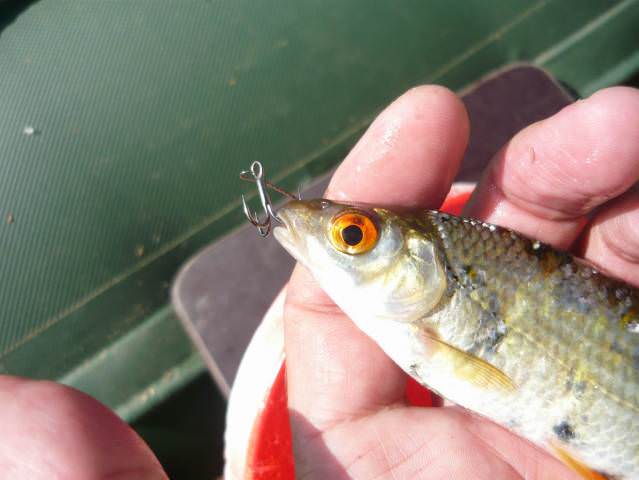
Used as a catch with general tackle together with a sliding weight or with a drop shot. You can also use this method to make a bait for fishing with a jig.
This method is performed as follows:
- First you need to insert the hook through the lower lip of the baitfish, and then through the upper.
- The hook must be turned with the tip up so that the baitfish can move while in an upright position.
The main disadvantage of this method is that by threading both lips of the bait fish, the fisherman completely blocks the flow of water into his mouth and its exit through the gills, so the fish simply dies.
Live baits that have been placed in this manner should be checked frequently and replaced with new ones if they no longer move.
Live bait attachment behind his back
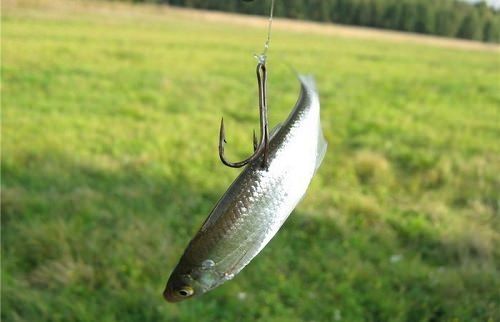
This method is recommended for fishing in a body of water with a quiet current, as well as for fishing on a girder.
This attachment is carried out as follows: Pass the hook onto the dorsal fin of the baitfish in such a way as not to injure its muscle covering.
The advantages of using such a nozzle include the following:
- The bait fish will swim very naturally, since nothing will interfere with it.
- Live bait will last longer than others and will not need to be replaced as often.
The disadvantages of this method include the fact that too active baitfish can break out of the hook and escape. In addition, if a fisherman damages the fish’s spine when hooking it, it will become motionless in the water.
Live bait attachment by the tail
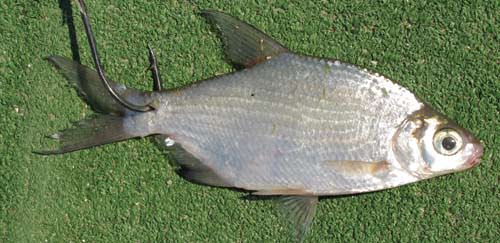
It is used in cases where fishing occurs without additional cargo. This method is also recommended for those fishermen who catch fish without a float or fish in thickets.
It is performed this way:
Insert the hook through the lower part of the baitfish (its tail area). Bring the tip of the hook out so that it is clearly visible.
The advantages of this method include that the live bait feels free, since there is no weight on it, and this allows it to move. The disadvantages are that live bait swims upside down, which does not always attract fish.
Some subtleties of fishing
Many novice fishermen do not have sufficient experience in catching predators, so they try to learn as much as possible how to catch predators with a spinning rod. The choice of equipment depends on the weather, body of water and other environmental features.
To catch a predator with live bait, you can use a spinning rod or a feeder. They make it much easier to pull stubborn pike from the bottom. You don't need to pull the line too hard, because if there is too much resistance, the predator may simply spit out the bait.
The choice of spinning rod for live bait fishing depends on environmental conditions. It is best to use braid.
If you plan to catch a predator in a standing body of water, then it is best to buy a fishing line, since it is practically invisible in the water column, which means that the predator will quickly fall into the trap. The most common fishing methods are donka or float tackle.
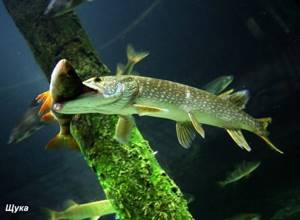
In the second option, you need to choose a float so that the bait does not drown it under any circumstances. Float tackle is good in coastal areas, where the amount of vegetation is much greater. In other cases, donka works better.
The weight of the cargo must be calculated correctly. If you are going fishing on a river with a current, then the maximum weight of the load should not exceed 150 grams. In calm water the maximum weight is 50 g. The universal length of fishing line with a thickness of 0.03 mm is no more than half a meter.
Read: How to catch pike and perch with a spinning rod
Placing live bait on two hooks
Placing live bait on two hooks is done as follows:
- Place the bait on a double hook by the head or pass it through the gills.
- Use a single hook to pierce the back of the baitfish.
Advantages of this method:
- Reliably secures the bait, and it does not fall off the hook.
- Double hooks have a better chance of successfully hooking a fish than single hooks.
Disadvantages of using this method:
- Double hooks keep the bait in a barely mobile state, so this bait will not attract inactive fish well.
- Live bait on two hooks is severely injured and dies faster.
The attachment with two hooks is used for fishing in a body of water with a strong current, so that the fish is securely attached.
What methods are there for baiting bait when fishing for pike perch?
Every fisherman tries to specialize in his favorite fish. However, everyone agrees that catching pike perch is very interesting, and the taste qualities of this type of fish are significantly superior to many other species.
Pike perch has always been considered a strong and worthy predator, to catch which a fisherman must have certain experience and skills:
- You can catch fish such as pike perch using live bait throughout the year, however, it bites best in the spring before spawning and after it ends. They usually go out overnight to fish for pike perch when it’s dawn or dawn. The gear for fishing with live bait will be a float rod.
- Usually they use a fishing rod with a rod of more than three meters. An inertial coil is not used. With such gear, fishing can be especially successful in places where the current is very quiet or there is no current at all.
- Often you have to use long casts to catch pike perch with live bait, so it’s a good idea to have a medium-sized sliding float on your fishing rod, with a carrying capacity of about three grams.
The sinker is placed at a distance of thirty centimeters above the live bait, which will allow the latter to be freer. In this case, it is quite acceptable to use a single hook, which will hold the bait well. The fishing line should be soft, diameter from 0.2 millimeters to 0.3. Similar gear is used for catching pike perch using live bait from the shoreline or from boats. - Live bait can be any young fish. Crucian carp and gudgeon have proven themselves very well. They stay attached to the hook longer.
- The live bait should be hooked behind the back, two centimeters behind the head. You can use a single, double or triple hook. It is necessary to ensure that the hook matches the size of the bait used. The hook should not exceed the size of the bait fish.
- During fishing, for greater safety, live bait should be stored lowered into the cage at a considerable depth, where the water temperature is lower. No more than a dozen live baits are launched into the bucket.
Additional methods of baiting bait
Additional bait baits include the following methods:
Nozzle for gills
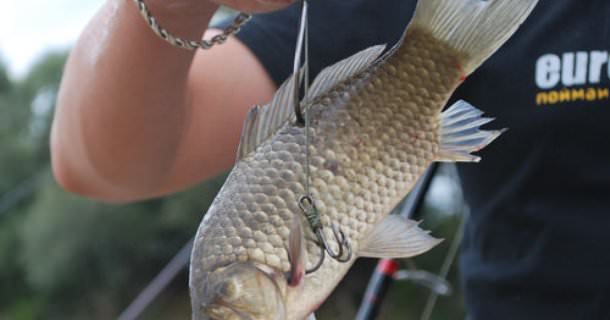
Used for double hook fishing.
Done this way:
- Pass the leash under the gills of the live bait so that its loop is in the fish’s mouth.
- Insert a double hook into this loop.
- Pull the leash until the double hook enters the baitfish’s mouth.
The advantages of this method: it allows the baitfish to move.
Disadvantages of this method:
- Execution requires practice and certain skills.
- Live bait is very injured, and due to the fact that the gills are pierced, it quickly dies, which requires frequent replacement.
Live bait bait head first

Done this way:
- Using a needle, pull the leash under the skin of the bait fish from the back to the head.
- Remove the needle with the leash near the fish's head.
Advantages of this method:
- Securely secures live bait.
- Great chance of catching a catch.
Disadvantages of this method:
- Difficulty in performing.
- Severe injury to live bait due to which it moves poorly in the water.
Planting live bait using the “Tricky” method
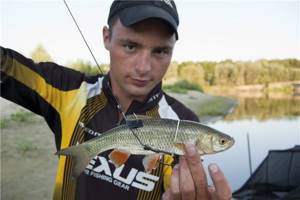
It is used in cases where the bite is bad and maximum naturalness of the bait is needed.
This is done as follows:
- Put a rubber band (ordinary stationery) on the tail of the live bait.
- Pull it tightly.
- Attach a hook to it.
Advantages of this method:
- The live bait is not damaged, so it is very active and quickly attracts fish.
- Quick and easy to perform.
Disadvantages of this method:
- A predatory fish like pike can simply tear the rubber band and drag away the bait.
- The rubber band will attract the attention of the fish, and it will not bite because it will consider it dangerous.
- The hook remains very visible.
Choosing a bait method depending on different types of fish
- To catch perch, it is better to attach live bait to the back.
- To catch pike, live bait should be attached to the gills or lips. This will give a minimum number of fish hatches.
- To catch large pike perch, use a bait bait attached to the dorsal fin.
- To catch burbot, you can use different bait methods. The main thing is that the bait should be on only one hook.
- To catch catfish, it is better to bait bait by the tail or lips.
- To catch an asp, bait should be baited using a “cunning” method.
Choosing a bait method depending on the live bait used
- The gudgeon is considered a universal live bait, to which all baiting methods can be successfully applied.
- It is better to bait crucian carp by the gills or lips.
- Rudd and roach should be baited by the gills.
- It is recommended to place the top and bleak behind the back.
- The bitterling needs to be planted only by the head.
- The perch can be baited by the lips.
- For a brush, it is better to use the attachment behind the head.
In addition, already dead fish, which are called dead bait, can be used as live bait.
It is used in such cases:
- When there are no live baits at hand or they could not be caught.
- In winter, when there is severe frost outside, baitfish freeze and die very quickly.
- When there is a good bite and the fish actively takes everything that is offered to it.
There are two ways to hook a dead fish.
The first nozzle method includes the following steps:
- First you need to prepare a leash. It must be made of wire.
- Pass the leash (without a hook) through the fish's mouth.
- Pierce the body of the fish and remove the leash in the area where the dorsal fin is located.
- Attach the hook to this tip of the leash.
- Tie the leash to the fishing line.
- Bend the leash near the fish at a slight angle and lower it into the water.
For fishing in a reservoir with a large current, the bending angle should be made more acute. The advantage of this bait method is that the fish is in a natural position.
The second method of attachment is done this way:
- You need to use two hooks: one single and the other double.
- Using a single hook, pierce the tail of the fish and bring the sting out.
- Use a double hook to bring it through the gills and lips of the fish. This method is convenient because the bait “sits” very firmly on the hook, and a fish that bites on it will certainly hook itself on one of the hooks.
Choosing a bait option depending on the fishing method
- For bottom fishing, live bait should be attached to the dorsal fins or the back itself.
- To fish with mugs, live bait should be attached to the head or gills. Also, the method of attaching live bait to the upper part of the neck is very effective.
- To fish on a girder, live bait must be secured to the back.
- If the catch takes place with a long cast, then the live bait should be attached very tightly to the hook so that it does not break off during flight. For this purpose, a live bait attachment behind the head is best suited.
- For fishing in a hole, you can use any baiting method, since the live bait is not subjected to any additional stress.
Method No. 1. Watch your back!
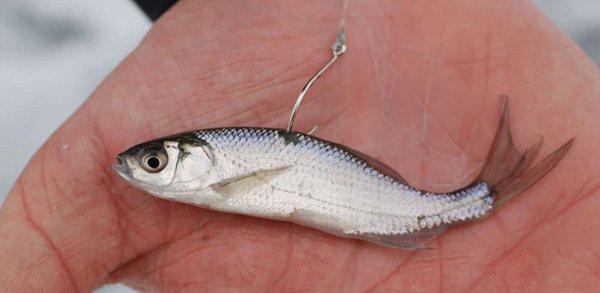
The most classic and frequently used method. When the hook pierces the back of the live bait so that it passes clearly under the dorsal fin.
However, in this case you need to be as careful as possible. If you hit or damage the ridge, the fish may be paralyzed or simply die. Experienced fishermen voice the figure - 3 millimeters. This is exactly how far you need to pierce the back below the fin.
Another important factor is behavioral characteristics in the natural habitat. That is, how the fish will behave in the water. Therefore, you need to bait the hook so that the live bait’s head “outweighs” a little. In this case, the live bait underwater will look like this; it will be looking for something at the bottom, swarming in the ground.
Blitz tips
- If the live bait dies, then most fish simply do not pay attention to it, so the fisherman must regularly inspect the live bait and, if necessary, replace it with a new one.
- There is no need to rush and pull out the tackle after the first bite. The fish must have time to securely hook onto the hook before it is pulled out.
- You should not put a lot of live bait in one bucket. When a fish is in a cramped space for a long time, it does not receive enough oxygen, and as a result, sluggish baitfish end up in the water.
- If you do not have a large container for storing live bait, then it needs to be equipped with an aerator that will supply more air.
- To catch live bait, you should use very sensitive and thin tackle that can detect even a barely perceptible bite.
- Experts recommend using exactly those live baits for catching fish that were caught in the body of water in which fishing will take place.
- You should not use live bait several times to catch different fish, as they will be too tormented and will not attract the attention of the fish.
- A treble hook should only be used for medium-sized baitfish. For small baitfish it will be very large and noticeable.
Place and time of spinning fishing with live bait
Throughout the open water season, pike exhibit a variety of activities. The highest activity of pike is observed in the spring before and after spawning, as well as in the fall from the end of August until the freeze-up. Therefore, during these periods, catching pike with live bait will be the most promising. And during periods of pike passivity, in particular in the summer, fishing with live bait is considered the most promising way of fishing for it. Moreover, a toothy predator can take bait at any time of the day - therefore, it is better to install live bait spinning tackle for a long period of time - in this case, the probability of capture will be higher. The striped predator prefers calm weather, both clear and with light drizzle. During full moons and periods of fluctuations in atmospheric pressure, the likelihood of catching a pike is significantly reduced.
The prospects of a fishing spot largely depend on the time of year - the colder it is, the deeper it is necessary to look for a striped predator. Both on the river and in a standing reservoir, the probability of capture significantly depends on the bottom topography and the presence of vegetation. The most promising places are:
- sand spits and rifts, possibly with a small amount of underwater vegetation;
- bays behind sand spits with moderate currents;
- places near snags or fallen trees;
- edges and other depth differences;
- fairway holes;
- places near coastal vegetation, water lilies, reeds;
- next to the bridge pilings.
In such places, very often the predator stands in ambush and waits for the fry to swim past. If fishing is carried out in a large water area, for example, near large fields of water lilies, then in the absence of bites it is advisable to transfer bait to different promising places. The same tactics are acceptable when fishing near the walls of reeds.
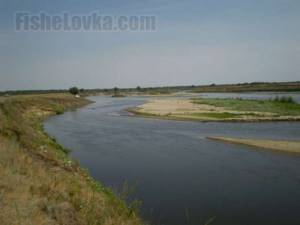
Photo 1. Channels are rich in small fish and predators.

